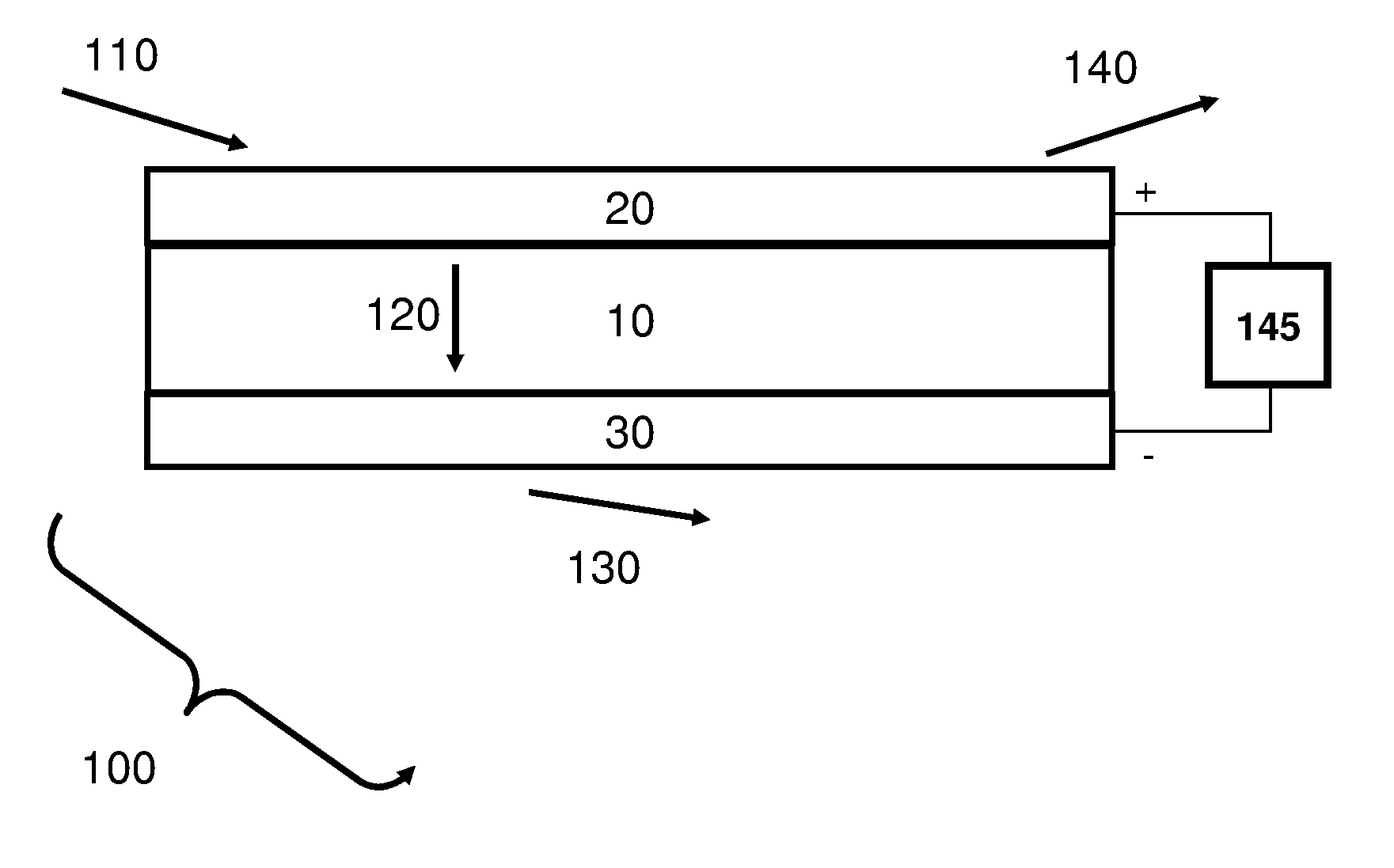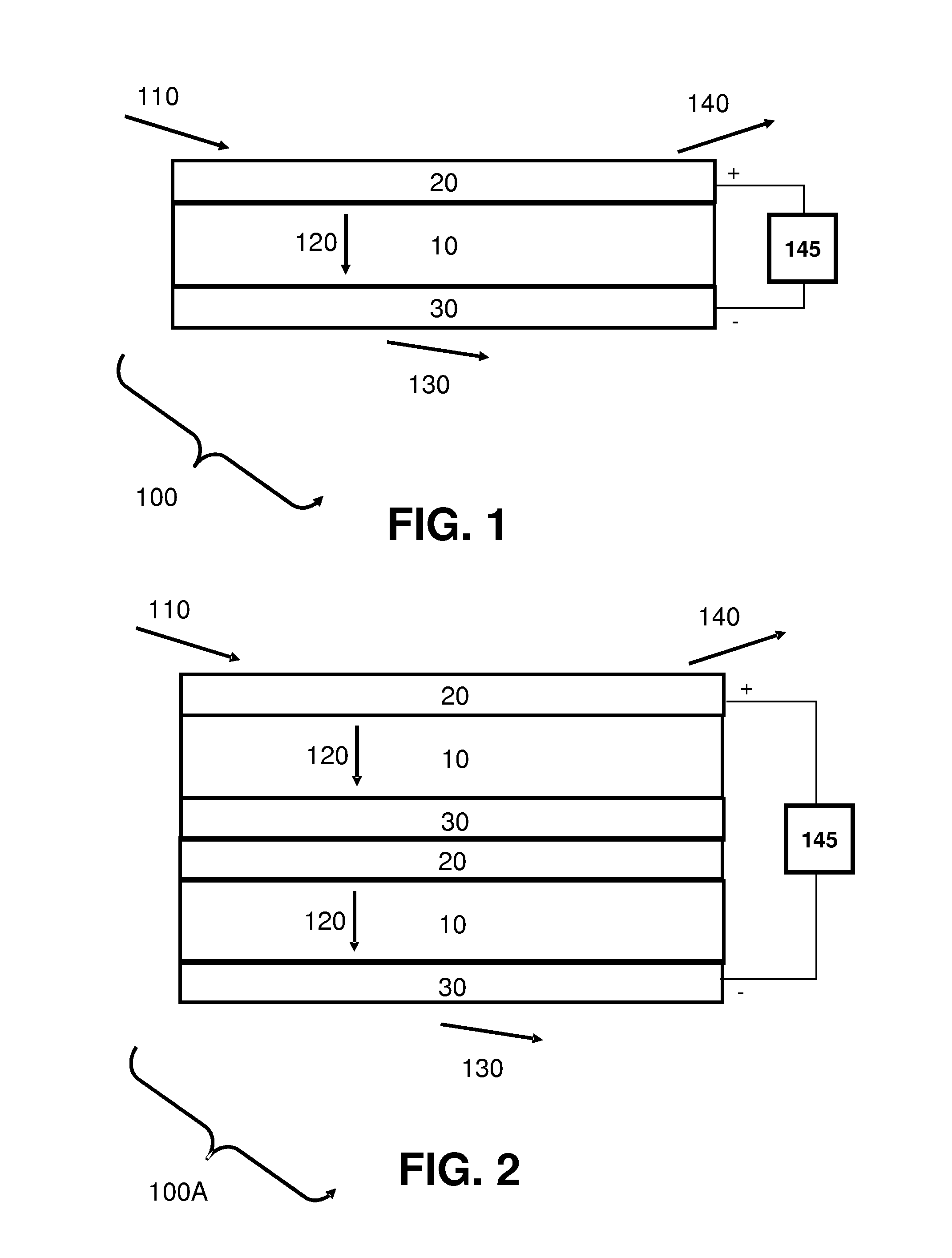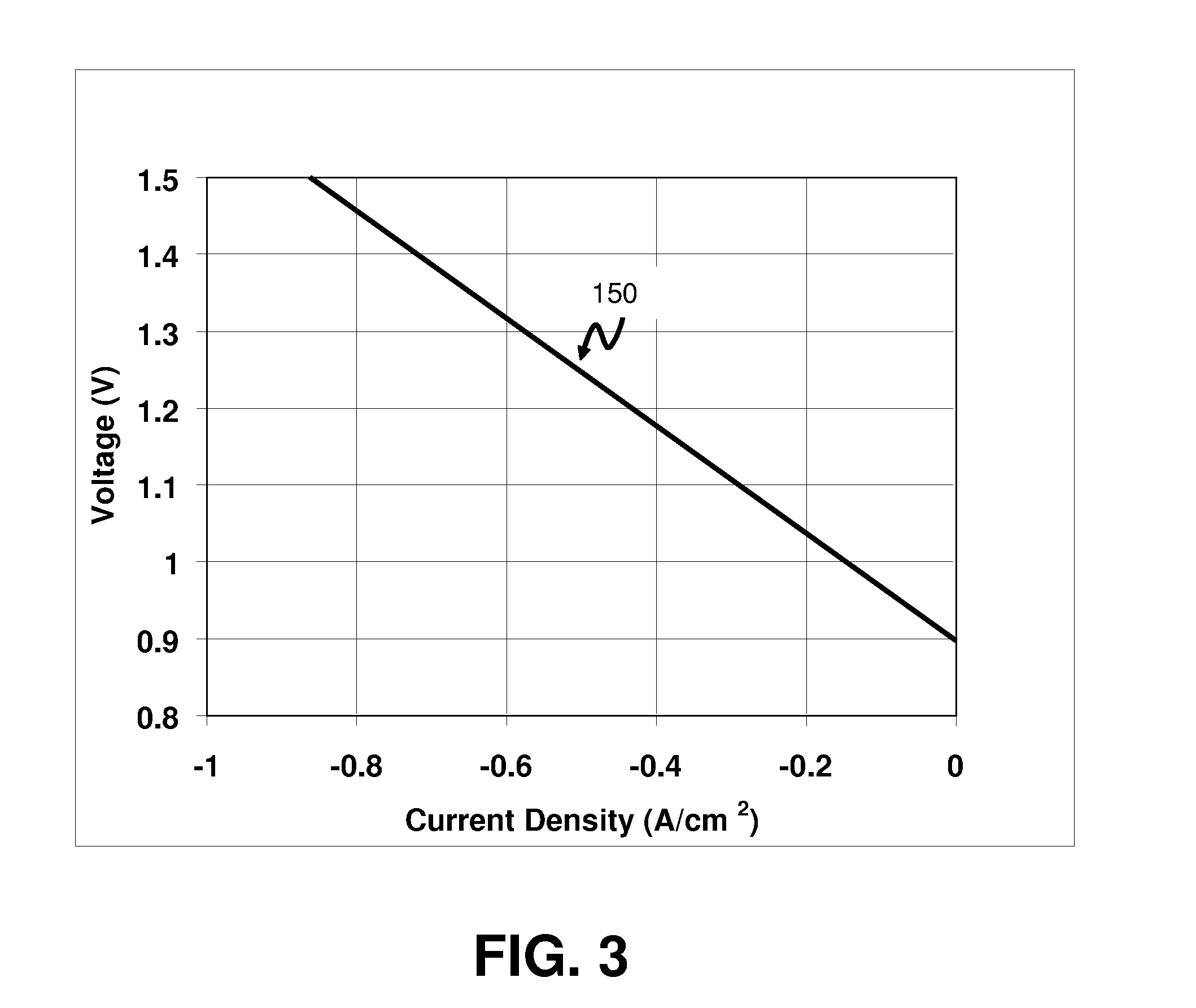Operation Of An Electrolysis Cell
a technology of electrolysis cell and operation, which is applied in the direction of electrochemical machining apparatus, climate sustainability, energy input, etc., can solve the problems of thermal gradient in the cell, excess heat generated in the electrolysis cell that must be removed, and the inability of the electrolysis cell to always operate at vsub>tn/sub>
- Summary
- Abstract
- Description
- Claims
- Application Information
AI Technical Summary
Problems solved by technology
Method used
Image
Examples
Embodiment Construction
[0018]Turning now to FIG. 1, an example electrolysis cell 100 is shown. Depending on design choice, the cell 100 may be constructed in various ways for electrolyzing different types of reactant materials into desired reaction products. By way of example only, the cell 100 may be constructed as a solid oxide electrolysis cell (SOEC) for electrolyzing steam (exemplifying the electrolysis reactant) into hydrogen (exemplifying a first reaction product) and oxygen (exemplifying a second reaction product). As is known in the art, solid oxide electrolysis cells of this type can be built using solid oxide fuel cells (SOFCs) that are capable of operating in the electrolysis mode. A SOFC normally converts a fuel, such as hydrogen into a reaction product such as water by the transmission of a second reaction material, such as oxygen, across a ceramic membrane (the electrolyte). Electrical energy is generated in this conversion process. Some SOFCs also have the ability to reverse this process a...
PUM
| Property | Measurement | Unit |
|---|---|---|
| voltage | aaaaa | aaaaa |
| voltage | aaaaa | aaaaa |
| concentration | aaaaa | aaaaa |
Abstract
Description
Claims
Application Information
 Login to View More
Login to View More - R&D
- Intellectual Property
- Life Sciences
- Materials
- Tech Scout
- Unparalleled Data Quality
- Higher Quality Content
- 60% Fewer Hallucinations
Browse by: Latest US Patents, China's latest patents, Technical Efficacy Thesaurus, Application Domain, Technology Topic, Popular Technical Reports.
© 2025 PatSnap. All rights reserved.Legal|Privacy policy|Modern Slavery Act Transparency Statement|Sitemap|About US| Contact US: help@patsnap.com



